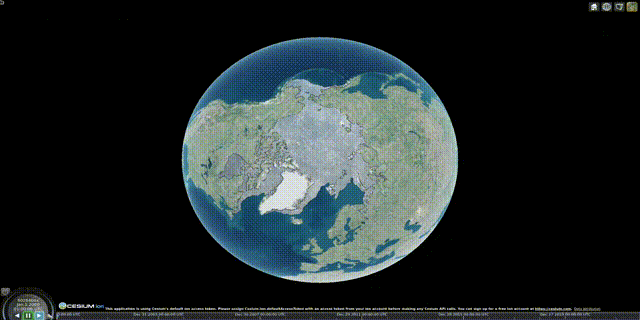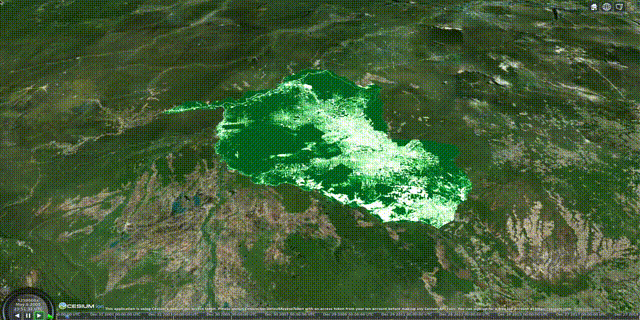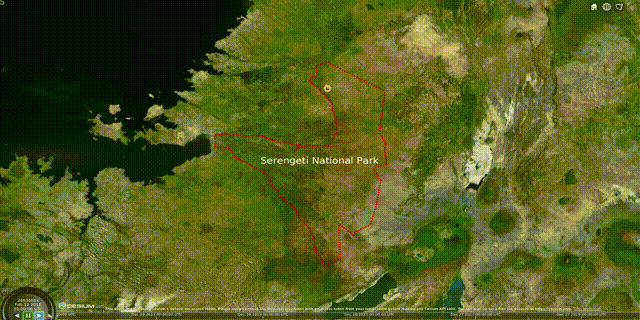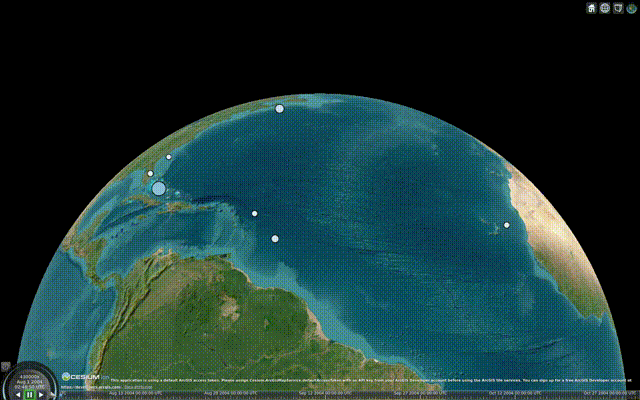You can install the development version of cesium from GitHub with:
# install.packages("remotes")
remotes::install_github("goergen95/cesium")Visit the
usecases
directory on GitHub to explore applications of the cesium package.
This package is highly experimental, very far from being feature-equal
compared with other mapping tools available to the R community and very
likely to include breaking-changes in the foreseeable future. In other
words, it needs your help! If you would like to be able to use
CesiumJS capabilities from
within R, please consider contributing to the development of this
package. You can report bugs, open feature-requests or contribute
pull-requests to improve the documentation or the code base. We have a
Code-of-Conduct
governing the process of contributing to this repository. By
participating in this project you agree to abide by its terms.
If you are familiar with the
leaflet package, you will quickly
be able to use cesium as well. In fact, behind the scenes, cesium
uses the very same design patterns that the authors of leaflet did. One
distinctive feature of cesium, which probably represents the most
difficult part in using it, is the inclusion of time as another
dimension for mapping spatial data. It uses
CesiumJS, developed by AGI, a
Javascript library for mapping spatio-temporal data on an interactive 3D
globe in the browser. While it also can be used to map data which is
constant in time, it shows its real strength when the properties of your
data change over time.
To achieve this, the authors of CesiumJS came up with a JSON based
file format called
CZML.
The cesium R package, in its essence, is a translator between sf objects
to CZML. This already takes us a long way, because we can use CZML
to describe very different types of geometries in a way that CesiumJS
can render these geometries and their properties dynamically.
To enable you to use the package efficiently, let’s briefly discuss some of the basic building blocks.
The most basic concept in using cesium is that of an entity. An entity
is a digital representation of an object located in space and time. When
your data does not change over time, you could think of an entity as a
single row in your sf object, where certain measurements, or
properties in the CesiumJS lingua, are associated with a specific
location in space. This becomes a little bit more complicated when your
data has a temporal component. Now, either the entity might change its
location in space over time, or it might change certain properties over
time, or both. To complicate it even further, if you have a collection
of entities that vary over time, more often than not they are not
sampled at the exact same time steps. You end up with a time series
where potentially both the location and properties of the entities vary
irregularly over time.
library(sf)## Linking to GEOS 3.10.2, GDAL 3.4.1, PROJ 8.2.1; sf_use_s2() is TRUE
data <- data.frame(
ID = c(1,1,2,2),
M = runif(4),
time = c(Sys.time() - 0:1 * 30, Sys.time() - 1:2 * 15),
geom = st_as_sfc(apply(cbind(runif(4, -180, 180), runif(4, -90, 90)), 1, st_point, simplify = F))
)
(data <- st_as_sf(data, crs = st_crs("EPSG:4326")))## Simple feature collection with 4 features and 3 fields
## Geometry type: POINT
## Dimension: XY
## Bounding box: xmin: -89.42126 ymin: -55.35812 xmax: 31.43983 ymax: 72.71347
## Geodetic CRS: WGS 84
## ID M time geometry
## 1 1 0.8582765 2023-10-11 19:28:49 POINT (19.19777 39.66742)
## 2 1 0.7900004 2023-10-11 19:28:19 POINT (25.57935 72.71347)
## 3 2 0.1460654 2023-10-11 19:28:34 POINT (31.43983 5.546985)
## 4 2 0.5349906 2023-10-11 19:28:19 POINT (-89.42126 -55.35812)
To accommodate such irregular time series as the one above, we use sf
as the digital representation for such objects. If your data varies over
time, cesium expects you to supply a variable which identifies all
observations that belong to a given entity. In the case of the data
shown above, you would be required to set id_var = "ID". Additionally,
you need to supply the variable that identifies the time of each
observation. In the case above, that would translate to
time_var = "time".
As you can see by inspecting the geometry column, the two entities
change their location over time. cesium does not check if an entity
changes its location, but instead offers an argument indicating whether
or not to treat space as constant or dynamic. In case of constant space,
the default, the first location is used for all subsequent observations
of an entity. For the data above, we thus would have to set
constant_space = FALSE, explicitly.
In case of time-dynamic entities, the question arises how certain
properties should be treated between the sampled time steps. cesium
let’s you decide between two different possibilities:
-
intervals: The default behavior in
cesium. In this case, a property is only valid for an interval between the actual observation and the following one. This means that the value of a property changes abruptly once the respective interval is no longer valid. You do not have to do anything special to enable intervals for time-tagged properties, since this is the default behavior. -
interpolation: In this case, properties are interpolated for the time between observations. Note, that interpolation can only be done for numerical properties. It cannot be sensually done for things like a text label or an image. You can use
interpolation_options()in most of theczml_*()functions to fine-control the interpolation behavior.
Currently, cesium provides basic support to plot the following items:
- point geometries enabled by
add_points()andpoint_options() - markers enabled by
add_markers()andmarker_options() - labels enabled by
add_labels()andlabel_options() - line geometries enabled by
add_lines()andline_options() - polygon geometries enabled by
add_polygons()andpolygon_options() - raster image time series enabled by
add_raster()
Most arguments should be set using the respective czml_*() function.
Please consider the help page if in doubt. If your data has no temporal
dimension to interpolate over or you wish to hold certain properties
constant, you might supply single values that are then applied for all
time steps.
In case you want to vary a property over time, you can use the formula
notation and additionally supply the column where the time steps are
found. Note, that different from leaflet, formulas are resolved on
the entity level. If you wish to set a property based on a global
statistic, you will need to pre-compute it.
Following is a list of features that most probably are required for a
productive usage of cesium but currently are not implemented:
- conversion methods for
terraand other spatial classes - support for
sfgeometries of typeMULTI* - mechanism to supply base maps
- layer manager enabling toggling visibility of layers
- legends for colors, sizes, etc.
- support for custom TMS/WMS servers
- support for custom terrain providers
- R Markdown and shiny support
Please contact the maintainers of the package if you would like to support the development of these or other items.
On the R-side, cesium borrows heavily from the leaflet package for
the internal workings of the code and the color mechanisms. Without the
people driving the development of CesiumJS and the CZML format, such
a thin wrapper as cesium would have no chance to go that far.
This package is licensed to you under the terms of the GNU General Public License version 3 or later.
Copyright 2023 Darius A. Görgen
-brightgreen.svg?style=flat)



